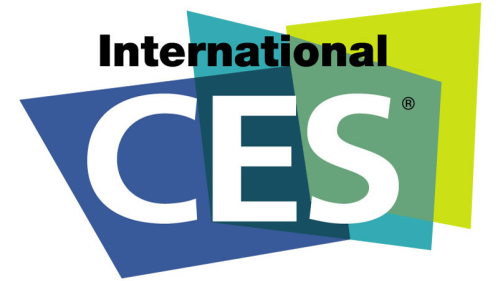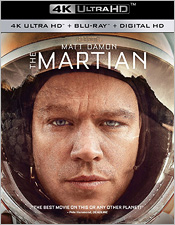The first thing I have to say is that I’m a lot more excited about Ultra HD Blu-ray than I expected to be, and certainly more than I was just a few weeks ago. I’ve now had the chance to see demonstrations of a number of films in 4K UHD BD with High Dynamic Range (HDR), including both new and catalog films (even a few personal favorite titles), and I will tell you that the experience of seeing a film you love in Ultra High Definition with HDR is both striking and thrilling. But I would qualify that excitement in a few ways, as follows…
First, the rollout of Ultra HD Blu-ray, as a physical media format, is going to be slow. Yes, the first player (from Samsung) will be available next month, with players from Panasonic and Philips due to follow shortly thereafter. But additional players aren’t likely to arrive before mid-year, with Q3 or early Q4 more likely for Sony and Oppo’s first hardware.

Yes, there will be approximately 20-30 titles available within a month or so of launch, but there are few A-list titles among the initial offerings from Fox, Sony, Warner, and Shout! Factory, and precious few must-have titles, at least for me. None of Sony or Lionsgate’s debut slates are instant purchases. Among Fox’s first batch, only The Martian is irresistible to me. And of the anticipated Warner titles, only Mad Max: Fury Road really hits that mark by my count, though I’ll be eager to see Man of Steel and Pacific Rim from them later in the year. Disney, Universal, and Paramount haven’t revealed their plans yet (though I do know that Paramount is already quietly preparing titles for announcement in the months ahead), and I suspect we won’t see many titles from them until much later in the year. Naturally, many Bits readers are asking me when/if Disney will bow Star Wars: The Force Awakens on the format and the only answer I have is: That remains to be seen. (Lucas always preferred to let hardware penetration reach a critical point before releasing his films on any new format – Disney may, or may not, have other ideas.) What all of this means is that, even though UHD BD officially launches as a format in Feb/March, the real product and marketing push isn’t expected until the 4th Quarter of 2016, naturally in time for the holidays.
On the display side, while most of the 4K UHD displays announced at CES (by the leading CE manufacturers at least) are fully compatible with HDR, most of the 4 million 4K displays already in consumer homes are not. Some small percentage of the more recently sold displays will eventually be given firmware updates to make them compatible with Ultra HD Premium-spec HDR, but it’s still uncertain which displays will be upgradable at this time. And as many of you already know, there are various “flavors” of HDR. The UHD Alliance mandates HDR10 (based on SMPTE ST 2084 and 2086), but there’s also Dolby Vision, and various manufacturers each seem to have their own version (including Sony, Philips, and others).
The way HDR will work on Ultra HD Blu-ray is that the player will handshake with your display, figure out what form of HDR it’s compatible with, and deliver the best HDR experience your TV can handle – HDR10 at minimum and better if possible. One of the reasons the Ultra HD Alliance announced their new “Ultra HD Premium” quality certification and logo is so that you as consumers will know how to match players, displays, and software at the point of purchase to get the highest possible quality. Just pick a 4K display, a 4K UHD BD player, and movie discs that display the logo (on the packaging) and you’ll be good to go. For those of you avid home theater fans who, like me, prefer to watch your movies at home via proper front projection, you’re out of luck at the moment – there are projectors that will do 4K, and there are projectors that are compatible with HDR, but there are only a couple that do both at the same time and they’re very expensive, on the order of many thousands of dollars. The hope is that by CES 2017, we’ll start to see much more affordable 4K Ultra HD Premium-compatible projectors being introduced.
The interesting thing is, when you see a really truly good 4K Ultra HD Blu-ray presentation, it’s not the higher resolution that really makes the difference – it’s the High Dynamic Range. HDR not only allows the image to render truly bright brights, but also truly black blacks, while allowing for a greater visible detail in each. What’s more, the increased luminance range means the color gamut (a term that’s officially going to be called “color palette” by the UHD Alliance going forward) increases dramatically – as many as 1 billion colors are possible, which is 75% of the visual spectrum. All of this results in a much more naturally-rendered and true-to-life image.
I should note here that the Ultra HD Alliance has actually created an interactive website for consumers to explain all of the benefits of UHD Blu-ray. I encourage you all to check it out here:
http://www.uhdbdinnumbers.com/
Now… all that said, 4K Ultra HD is not a product for which there’s a lot of consumer demand at the moment. Yes… as I mentioned, there are about 4 million 4K UHD displays out in the world already, which (it’s worth noting) is actually ahead of the adoption curve for HDTV at this same point. But, if the feedback of our readers is any judge – and Bits readers are among the most savvy and most enthusiastic home theater consumers there are – people aren’t exactly eager to upgrade to yet another disc format. The Digital Entertainment Group notes that there is very high consumer awareness of 4K, and most of those consumers surveyed say it’s an “aspirational” technology – not something they’re going to rush out and buy anytime soon, but something they’d like to own someday. So I personally think the rollout of 4K UHD is going to be a long, slow build over time – years, in fact.
But here’s the thing, and mark my words on this: 4K (and resolutions beyond 1080p) with HDR is the future of television. Period. Why do I believe this? A couple things.
First, you can already stream 4K with HDR from Netflix, Amazon, and YouTube (yes, YouTube says they’re adding HDR to their 4K content). So if you buy a TV today, there’s already a lot of content you can view, regardless of whether or not you buy an actual UHD Blu-ray player – a lot more than when HD first launched, certainly.
Second, virtually every single display manufacturer at CES told me that they plan to eventually stop making regular 1080p-only displays. What that means is that, even if you aren’t in the market for a 4K display now (or later this year or next), when your current TV craps out and you need to buy a new one, you’re likely only going to have 4K display choices available to you – and at affordable prices. And of course those displays will all be backwards compatible with SD, 720, 1080, etc. So, over the next decade, 4K will become the minimum TV standard for everyone, eventually reaching 100% household penetration. 4K is here… and it will take over eventually.
What does that mean for the Ultra HD Blu-ray format? Well… it’s both complicated and not. I’ve heard a lot of people say Ultra HD Blu-ray is just going to be a niche format. Yes, I think that is probably true. And here’s the thing: That doesn’t matter one bit.
Here’s why: The UHD Alliance’s new “Ultra HD Premium” standard is essentially format agnostic. It doesn’t care how you experience it – that could via physical media (which will certainly be the highest quality experience), but it can also be via streaming, digital download, broadcast, satellite, or what have you. In fact, the thing that surprised me the most at CES 2016 is just how little presence and attention Ultra HD Blu-ray commanded at the convention. When DVD and Blu-ray first launched, it was with great fanfare, with most of the major Hollywood studios touting their support, and with nearly ever major hardware manufacturer rushing their players to the market. Not so this time. Yes, a majority of studios and manufacturers are members of the UHD Alliance and do plan to release Ultra HD Blu-ray discs and players. But really, what they’re all touting at CES is not the actual discs, but the Ultra HD Premium standard. Warner, Fox, Lionsgate, Sony, Disney… they will certainly be happy to sell you their movies on UHD Blu-ray Discs but, if you don’t buy them on disc, they’ll be just as happy to sell you a UHD movie digitally. In fact, Warner’s Ron Sanders even noted to me at CES that he expects the digital market for UHD to be greater than physical media in the long term. The point is, everyone is getting behind Ultra HD Premium… however you choose to consume it. Ultimately, everybody wins, consumers and the industry alike.
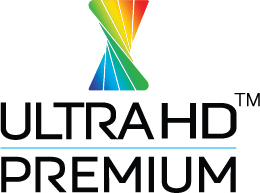
The fact is, we’re simply beyond the point where any physical media format can or should be declared a success or failure if it remains a niche market. Physical media simply is a niche market now… and that’s okay. If you’re a casual media consumer, streaming and downloading UHD content will likely be sufficient for you. If you’re a more avid and demanding consumer, the disc option will remain available to you for a long time to come. That’s just the world we now live in.
A couple additional thoughts…
A number of Bits readers have complained that UHD Blu-ray doesn’t include a 3D option. Here’s the thing: Backwards compatibility with existing Blu-ray 3D is absolutely an option in the spec, but the decision as to whether to implement this or not is left up to the individual manufacturers. What you’re going to see is that some manufacturers, like Samsung, will choose to still include BD3D compatibility in their displays and players going forward. Others will not. As to why the UHD Blu-ray spec didn’t launch with full 4K 3D support right from the start, Fox’s Chief Technology Officer, Hanno Basse (one of the key people responsible for organizing the industry behind the UHD Premium standard), reminded me that there’s simply no actual 4K 3D content available. Everything you see theatrically in 3D is 2K. Basse also noted that full 4K 3D could certainly be added to the UHD BD spec later on, as was the case with DTS on DVD and 3D on regular Blu-ray. It will depend on consumer and industry demand.
Based on my conversations with the various display manufacturers at CES, all of them are currently choosing to focus on 4K rather than 3D, as 1080p 3D really never took off widely with consumers. The reason: Most people hate wearing the glasses at home. Most manufacturers do anticipate revisiting consumer/home 3D at some point in the future, but likely not until truly high-quality “autostereoscopic” display technology (that does not require glasses) is ready to leave the lab. And that may be a good decade away yet. Basse (and others) told me that progress on this front is steady but very slow. Some engineers believe it may actually require 8K displays and still higher refresh rates. Moreover, it’s going to require a tremendous increase in image processing power on the display itself, which will add greatly to the hardware price point. So don’t expect it anytime soon.
Back to Ultra HD Blu-ray… one thing that’s surprised me is how much more “ready” the format is at launch that Blu-ray Disc was. Remember how some of those early Blu-ray players were barely functional, even at the $1K-plus entry price point? Remember how BD-Java sucked for a long time? Remember how many discs simply wouldn’t work with some players, and how some players had trouble with BD-50 discs? Yeah. Not so with Ultra HD. The basic spec has been tested to death. Triple-layer UHD BD discs are being manufactured right now in high yields and these discs already work just fine on launch hardware. Authoring UHD BD titles is a simple evolution from authoring existing BD software. In fact, I spoke with Scenarist managing partner Rolf Hartley at some length at CES, and he told me that the company’s UHD authoring software is essentially just an update of the software already widely used by Blu-ray authoring professionals today. They’ve been working with the spec for many months now, and things are so stable that when the very first prototype UHD Blu-ray players started to arrive in-house from Samsung and Panasonic, they worked with no hiccups right out of the box. That’s a far cry from the case with the launch of Blu-ray, I can tell you.
Obviously, Ultra HD Blu-ray will offer the latest “object based” surround sound formats, including Dolby Atmos and DTS:X. This is good, but I wouldn’t expect it to be much of a draw in terms of getting large numbers of consumers to adopt Ultra HD Blu-ray. I’ve heard both, and they absolutely sound great, but even many avid home theater consumers I’ve spoken with – people who already have 7.1 speaker systems installed – find it a hard swallow to start adding additional overhead mounted (or top-firing) speakers to their sound systems to experience the new height channels. Nevertheless, both formats have at their core regular DTS-HD MA and Dolby TrueHD signals, so as you choose to upgrade your current A/V receivers, and add new speakers to your system, your movie audio experience will only improve.
In any case, almost across the board, the consumer experience of Ultra HD Blu-ray should be very familiar to Blu-ray and almost completely trouble free right from the get-go. The UHD Alliance has even worked hard to improve disc boot-up times on UHD Blu-ray over existing Blu-ray. So gone should be those long waits between the time you first put the disc in your player and when you actually start watching the content.
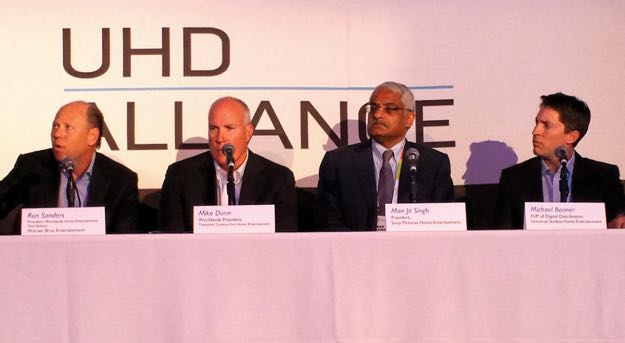
Ultimately, I think 4K and Ultra HD Premium with HDR is here to stay. And while Ultra HD Blu-ray will almost certainly remain something of a niche format, I think it too will be with us for quite a while. As I said, I’m more excited for it than I thought I’d be. Many home theater fans rightly (and understandably) bemoan the idea of upgrading their movies and hardware to yet another format, at no small expense. But given the surprisingly low cost of entry for UHD BD even at launch ($399 for hardware and under $40 for movie titles), making the leap isn’t as daunting as it might have been, and it’s certainly not as expensive as it’s been with past format launches. Simply put, nobody needs 4K Ultra HD with HDR right now. But when you’re ready for it, and when you are eventually in the market for new hardware, 4K will be there for you. By that time, the cost of displays, players and movie discs will only have gotten cheaper… and there will be a lot more options for all three to chose from.
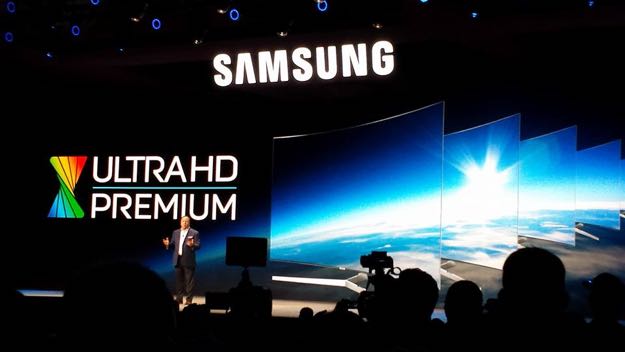
There’s one other thing I understand better about Ultra HD Blu-ray from firsthand experience at CES: You might not think you want it now… but the first time you see one of your favorite films on UHD Blu-ray in that level of quality, you may find yourself changing your tune. Remember, you don’t have to upgrade all your movies to UHD – all your existing BD and DVD discs will work fine on that new player. But trust me, the moment you get your first glance of Mad Max: Fury Road, The Godfather, or Lawrence of Arabia in 4K with HDR… your heart is going to skip a beat. And that’s no small thing.
Anyway, we are absolutely going to start covering 4K Ultra HD Blu-ray here at The Bits, in addition to existing Blu-ray and DVD. We’ll review the discs, talk about our hands-on experiences with the format and its hardware, and cover all the latest news and developments. But don’t expect UHD Blu-ray to take over around here – we’re just going to add it to our existing BD and DVD coverage at the site. In any case, we certainly look forward to sharing it with you… and hearing what you think in return.
We’ll have more on UHD Blu-ray in the days and weeks ahead. Until then, stay tuned…
- Bill Hunt
